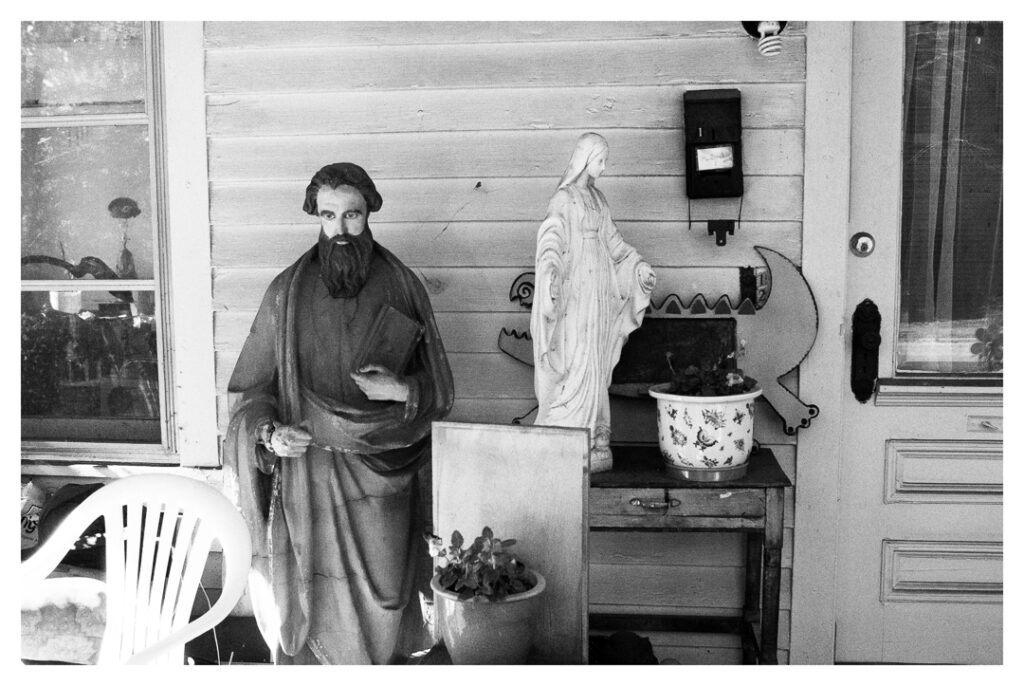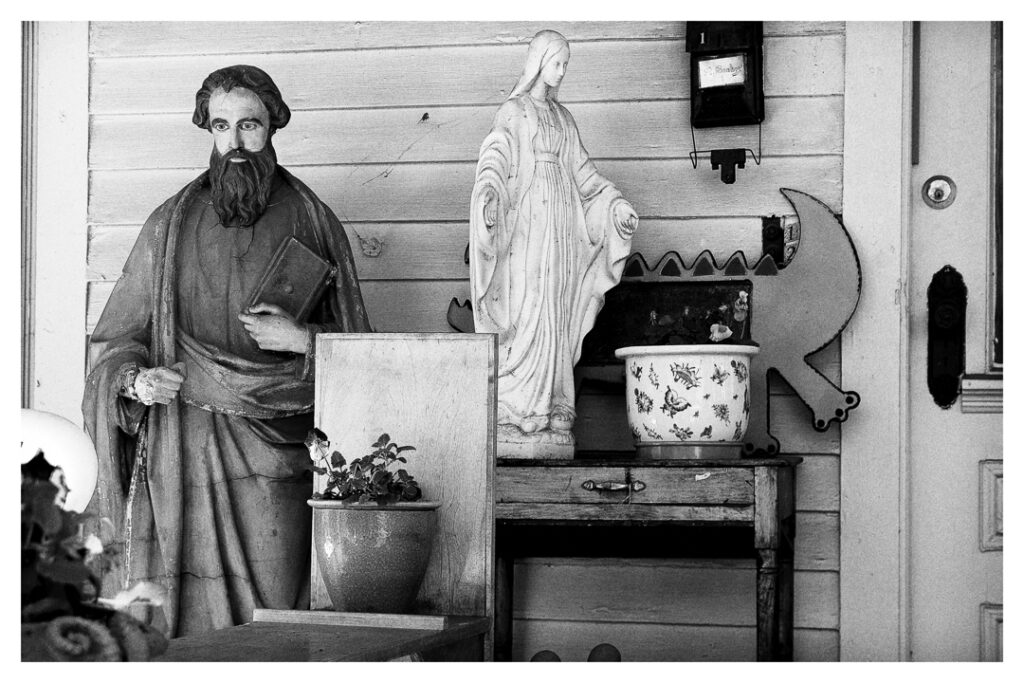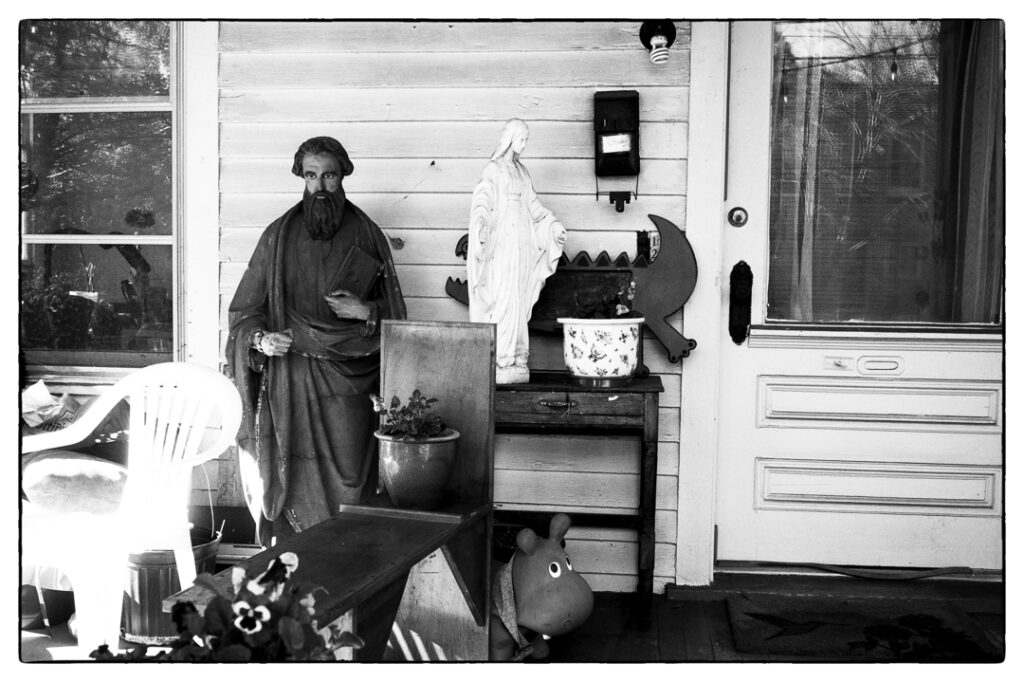


Above are three digital files that have been run through the Tri-X emulation in Silver Efex. They are RAW files from 1) a 10 MP D200; 2) a 4/14 MP Sigma SD15 Foveon; and 3) an 18 MP M9 CCD Monochrom. (Click to enlarge.)
IMO, The D200 is the closest to a Tri-X film negative. ( Read more here).
The 4 MP Sigma SD15 renders the best to my eye and can pass for carefully developed Tri-X (pulled at 200 maybe) although it looks less like Tri-X than does the D200; compare it to the 10 MP D200 file and you can see the clear superiority of the 4 MP Foveon sensor in terms of tonality and sharpness. It’s a stunning B&W rendering from such a modest MP sensor. IMO, it’s also preferable to the Monochrom’s output.
The Monochrome is the least like film Tri-X; blown highlights that you’d never see on a Tri-X negative (even though the RAW file was shot at -.3 EV), tonality and an odd clarity more like Panatomic-X than Tri-X. The Monochrom just doesn’t work well with Silver Efex emulations..
Winner for “The Tri-X Look:” The Nikon D200. Winner for the best look: The Sigma SD15.
